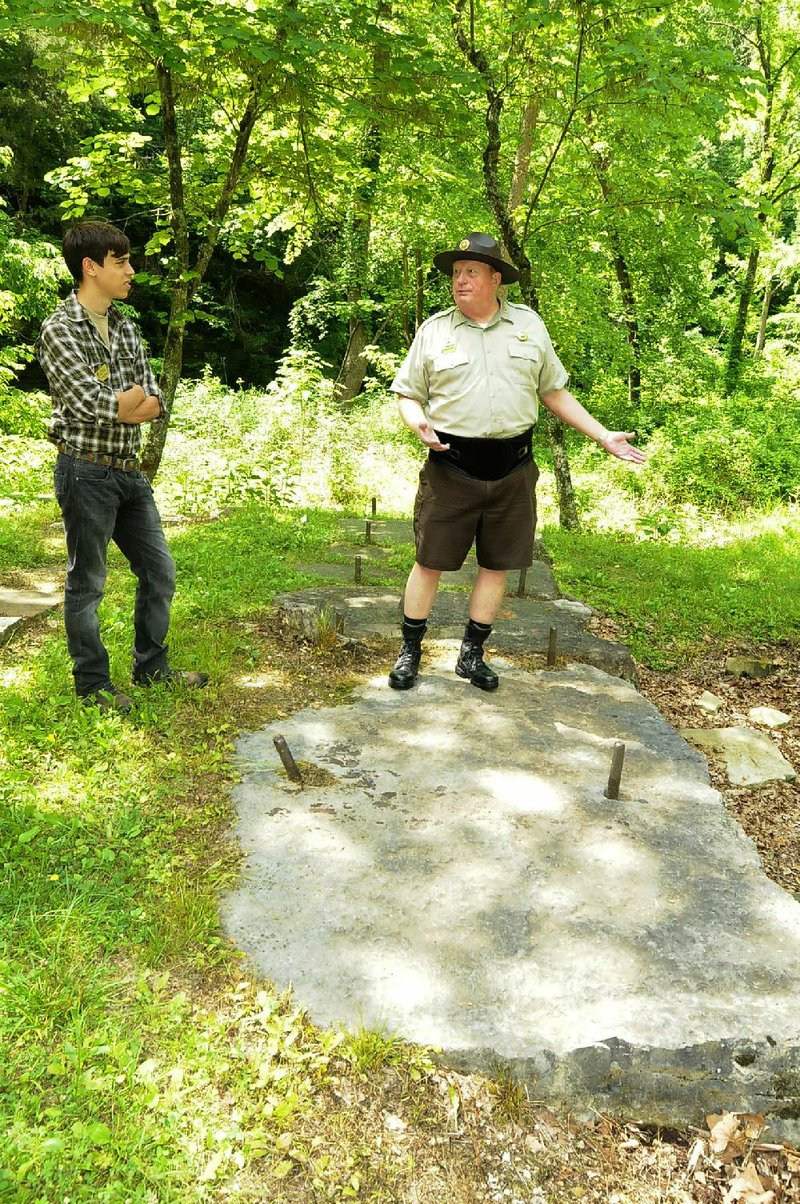Today a nature trail winds through Van Winkle Hollow located in Hobbs State Park, but in the mid-1800s a small and thriving community nestled on the land, according to Steve Chyrchel, park interpreter.
Chyrchel said free tours will be offered Tuesday as a way to share the history of the hollow with the public.
Arkansas' largest sawmill once stood on the land, he said. Homes, along with a general store, blacksmith shop and community school, also were built in the hollow. Foundation remnants of many of the buildings remain today.
Peter Van Winkle moved his sawmill operation to the site in eastern Benton County in 1858, according to Hobbs State Park documents. The documents state he previously benefited financially from his time as a wagon-maker in Washington County.
Van Winkle's homestead grew into a community that housed not only his family, which included 12 children, but also 18 slaves along with the families of other workers who were employed at the mill, Chyrchel said. On weekends the hollow was a gathering place for those who lived in the region. Families would barter goods and socialize at the site.
A road ran through the hollow connecting Elkhorn Tavern, presently located in Pea Ridge National Military Park, to Huntsville, Chyrchel said. Between 8,000 to 10,000 Confederate soldiers sought refuge in the hollow after a defeat at the Battle of Pea Ridge.
In an attempt to surprise the Union troops by an attack from the north, the soldiers left their supply train far behind to the south. When the Union force repelled the initial attacks, the Confederates ran low on supplies and had to retreat. They tried to use limestone found in the hollow to cook corn they ground using a grist mill on the site.
"Limestone heated up will explode," Chyrchel said. He said explosions throughout the camp caused a brief panic that the Union was attacking. Diaries of soldiers who camped in the hollow said it was the first time many had laughed in more than three days.
Many clues tell of the history of the people who once lived on the land, Chyrchel said, while walking along the path Saturday. Stone slabs with steel bolts remain where they once held a steam engine delivered from St. Louis for the mill. A crumbling wall also gives an outline of the Van Winkles' yard where a two-story wood home stood. A few stones remain from a wall that once held an antebellum garden.
Chyrchel pointed to a non-native plant called mock orange and explained that the plant was brought in by the Van Winkles for their garden. It now grows wild on slopes leading up to where the garden once sat. The Van Winkles had more money than most in the region at the time, Chyrchel said. They were able to bring in non-native plants along with other items such as a piano.
Most cities in Northwest Arkansas were not incorporated at the time. It wasn't until 1881 that nearby Rogers was incorporated. The Blackburn family who ran the mill in War Eagle were friends with the Van Winkles, Chyrchel said. Church services were also held in another household in War Eagle.
Wood from the mill was used to build a majority of the Victorian-type homes found in Rogers, Bentonville, Fayetteville and Eureka Springs, he said.
Operations at the mill stopped for a short time when Van Winkle fled with his family to Texas during the Civil War. A majority of buildings at the site were burned, including the family house and the mill. The family returned, however, and rebuilt the house along with the business, which reopened in 1865.
Van Winkle continued running the mill until his death in 1882.
Historic Van Winkle Trail is listed in the National Register of Historic Places, according to the park's website. The trail is a half-mile in length.
Metro on 06/02/2014

